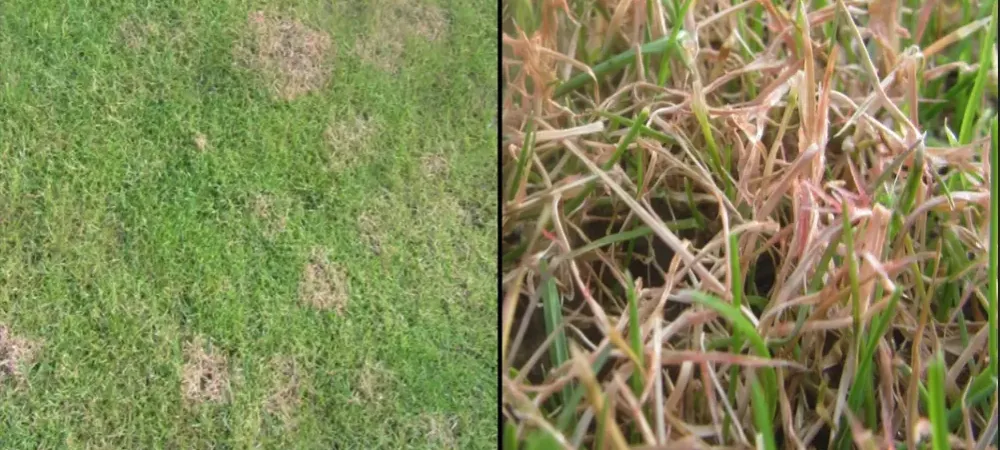Red Thread Lawn Disease: What It Is and How to Get Rid of It

You step outside expecting to enjoy a sunny afternoon, only to notice odd pink or reddish patches spreading across your lawn. It’s not just discolored—it’s stressed, thinning, and patchy. If that sounds familiar, you may be dealing with Red Thread, one of the most common lawn diseases in our region.
While it looks serious, the good news is that Red Thread is treatable—and usually not permanent. Here’s what causes it, how to fix it, and when to call in a pro for help.
What Is Red Thread Lawn Disease?
Red Thread is a fungal lawn disease caused by Laetisaria fuciformis. It thrives in cool, damp conditions, especially in spring and fall when your grass is growing but the weather is still humid. It gets its name from the reddish-pink, thread-like fibers it forms at the tips of grass blades.
You’ll typically notice:
- Faded or pinkish patches in the lawn
- Thin or frayed grass blades
- Pink or coral “threads” stretching from the grass tips
- Irregular spots, usually 2–8 inches wide, that may merge over time
Why Red Thread Disease Happens
Red Thread doesn’t appear out of nowhere—it’s usually a sign of an underlying problem in your lawn. Most often, that problem is low nitrogen levels or environmental stress.
Most common causes:
- Low nitrogen or imbalanced fertilizer use
- Overwatering or consistently damp conditions
- Poor air circulation and thatch buildup
- Dull mower blades that damage grass
- Thin, weak turf that can’t resist fungal infections
How to Treat and Prevent Red Thread
Red Thread usually won’t kill your grass—but it does weaken it and leave it vulnerable to other issues. The faster you act, the faster your lawn recovers.
Apply the Right Fertilizer
Red Thread thrives in nitrogen-deficient lawns. Applying a slow-release, nitrogen-rich fertilizer can help your lawn outgrow the fungus.
Best for: Lawns showing early signs of red or pink discoloration
Pros: Encourages healthy regrowth and resistance
Cons: Takes a couple of weeks to show visible improvement
Mow Smart
Always mow with sharp blades and never remove more than one-third of the grass blade at a time. Avoid mowing when the grass is wet to reduce the spread of fungal spores.
Adjust Watering Habits
Water deeply, but less often—and always early in the morning. Constant dampness encourages fungal growth, so avoid evening watering.
Pro tip: Install a timer or moisture sensor on your sprinkler system to prevent overwatering.
Aerate and Dethatch
Compacted soil and heavy thatch prevent airflow and trap moisture. Aerating your lawn and removing excess thatch helps improve drainage and strengthen the root system.
Use Fungicide Only When Needed
In most cases, improving lawn care is enough. But for stubborn or recurring outbreaks, a professional fungicide may be needed.
Best for: Lawns with severe or spreading Red Thread
Pros: Stops fungal growth quickly
Cons: Must be applied carefully to avoid damage to beneficial organisms
When to Call in a Lawn Care Pro
If you’ve treated your lawn and the Red Thread keeps coming back—or you’re unsure what’s causing the problem—it may be time to call in a lawn care professional.
At CMS Landscaping, we assess your lawn’s condition, test for nutrient imbalances, and build a treatment plan tailored to your soil and grass type. Whether you need a targeted fertilization program, aeration, or expert fungicide application, we’ll help your lawn bounce back—stronger than ever.
Restore Your Lawn’s Health with CMS Landscaping
Red Thread may look serious, but with the right care and a professional plan, your lawn can recover quickly and thrive through every season.
Let us help you take the guesswork out of lawn recovery.
Contact CMS Landscaping today to schedule a lawn evaluation and build your customized treatment plan!
